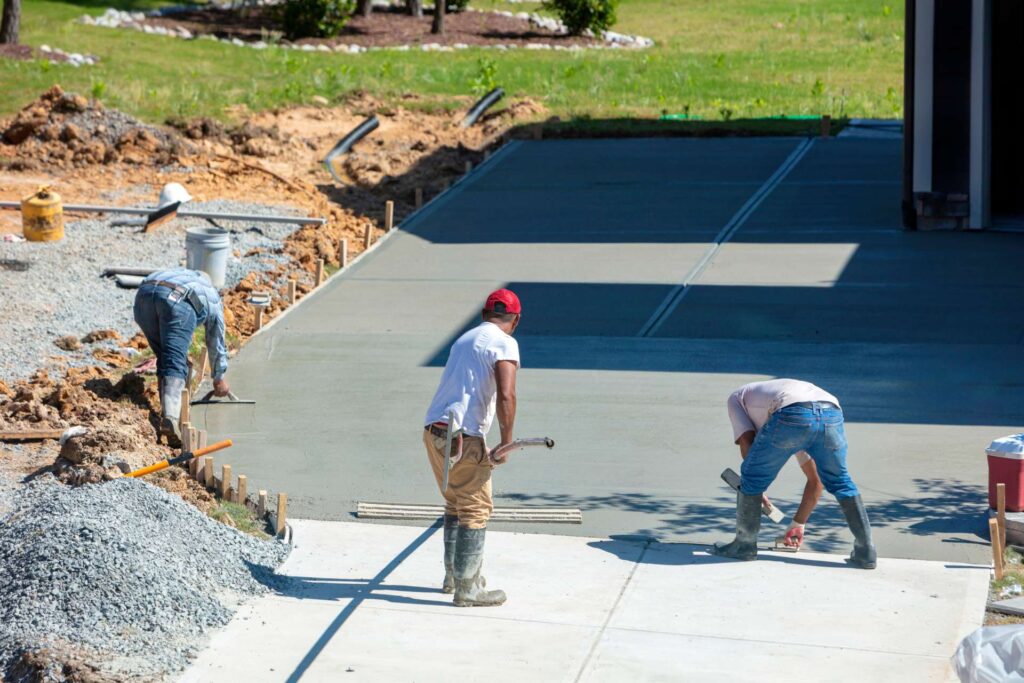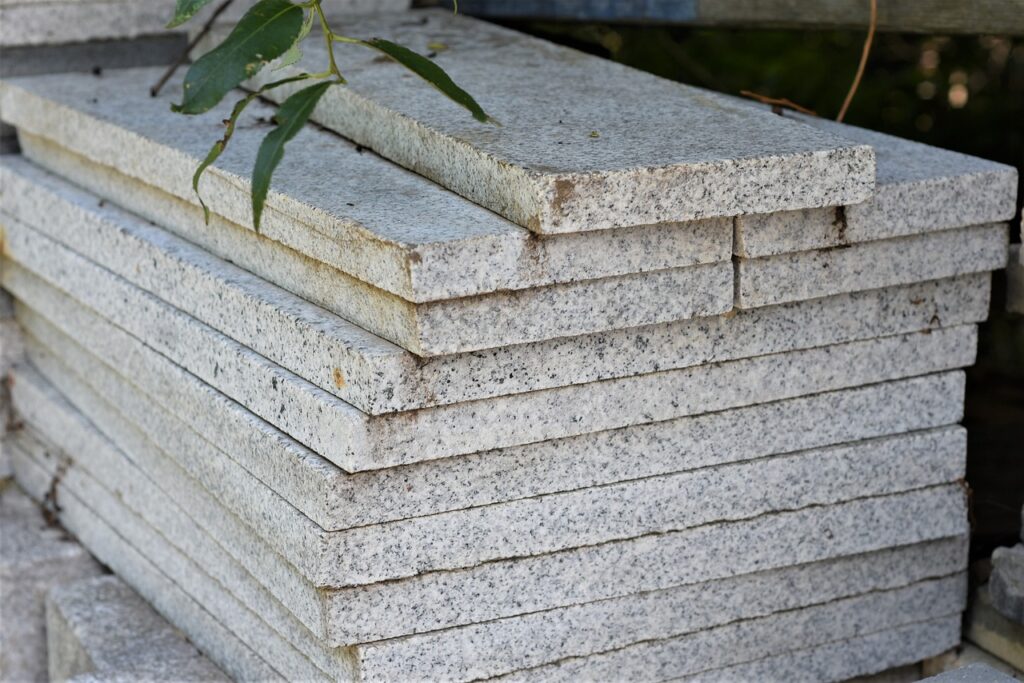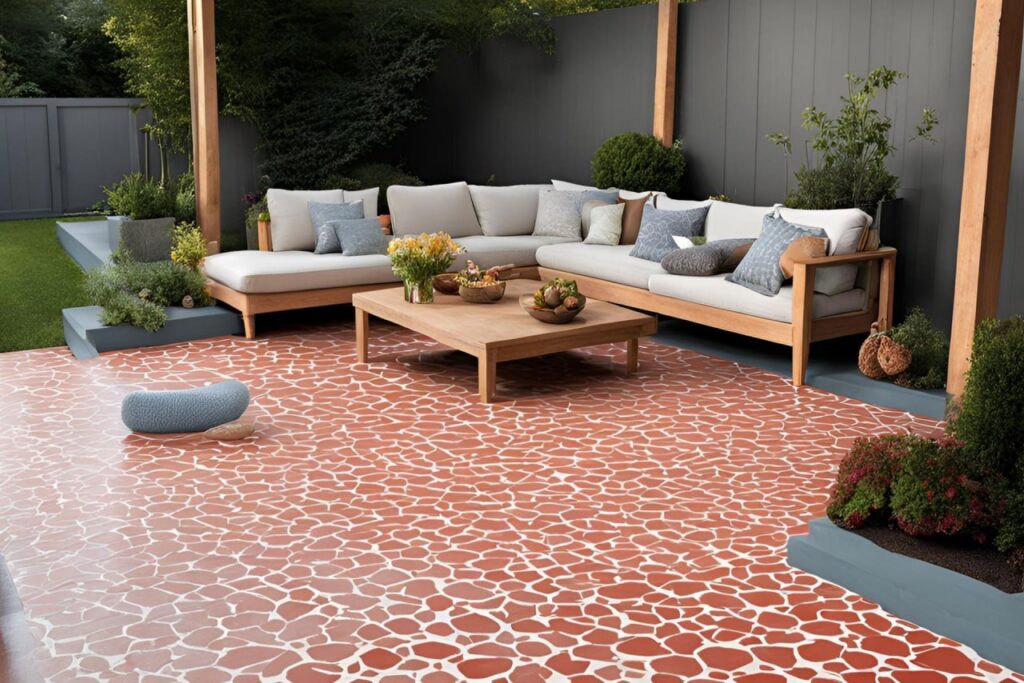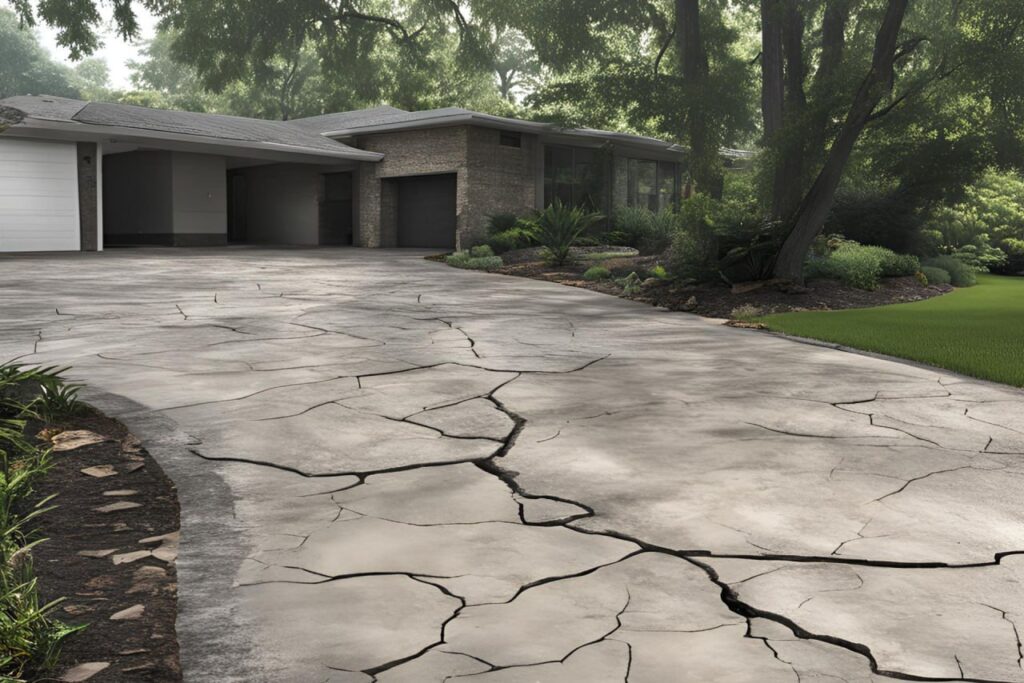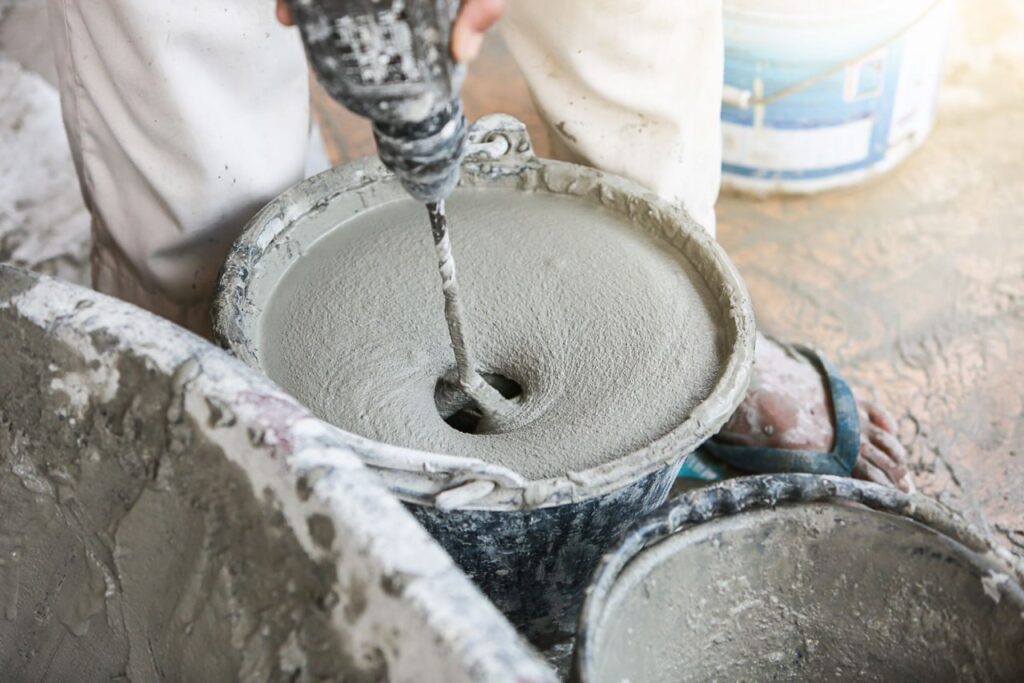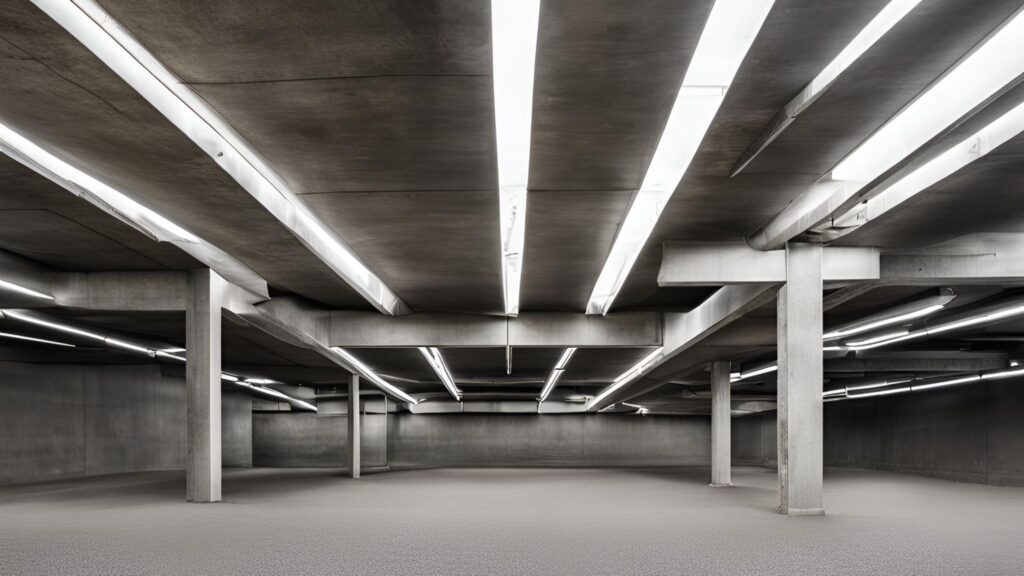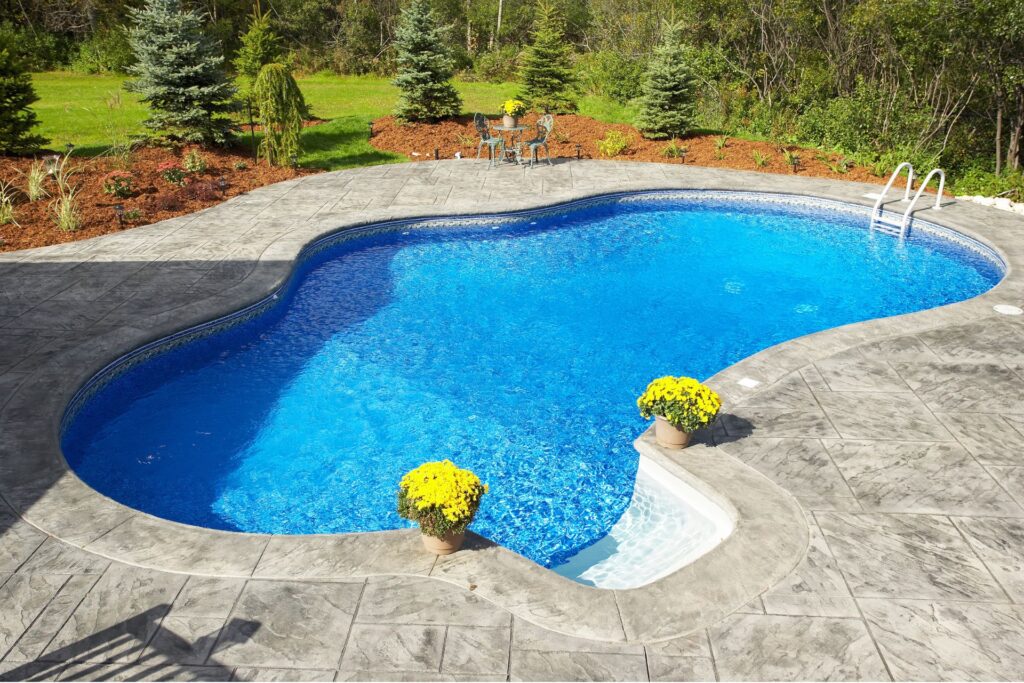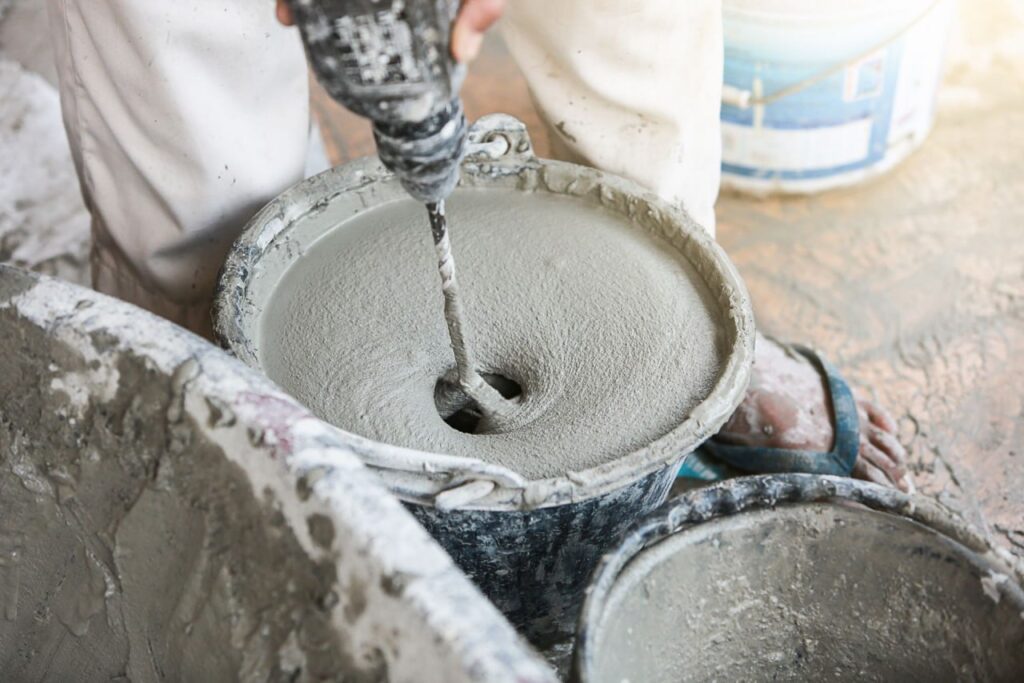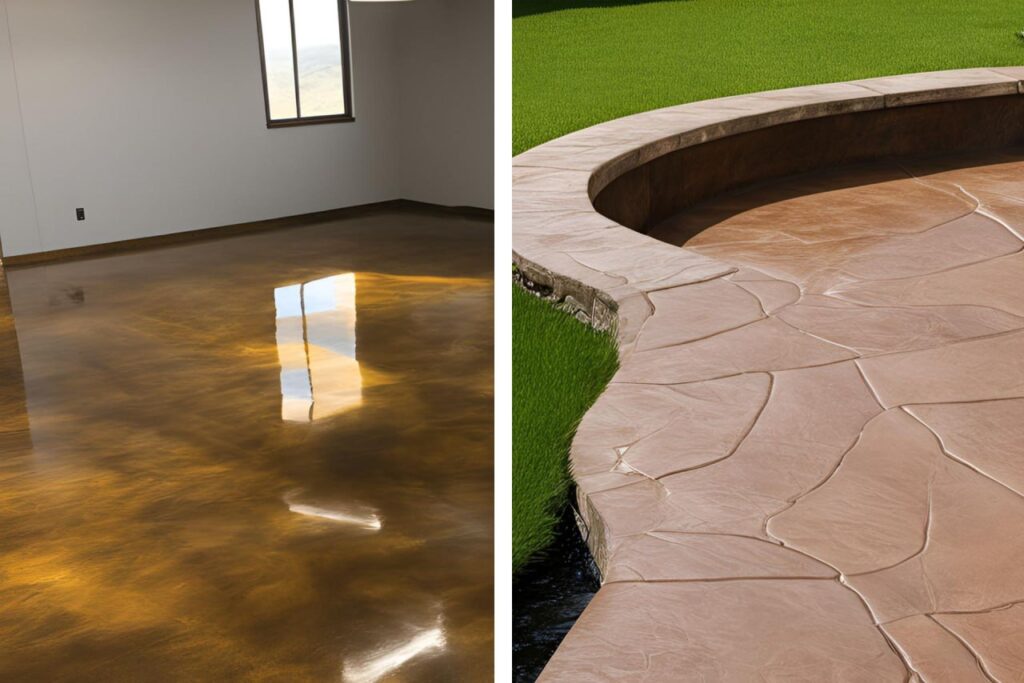Welcome to our comprehensive guide on the potential effects of pool chlorine on concrete surfaces. If you’re a pool owner, you might be wondering whether the chemicals you use to keep your pool sparkling clean could be harming the concrete that surrounds it. In this article, we will delve into the science behind chlorine and its interaction with concrete, explore common signs of damage, and offer practical tips to protect your pool area. Whether you’re looking to prevent damage or address existing issues, understanding the impact of chlorine on concrete is crucial for maintaining a beautiful and durable pool environment.
Chlorine from pool water can potentially damage concrete surfaces over time. High concentrations of chlorine can lead to discoloration, surface erosion, and weakening of the concrete structure. To prevent damage, it’s essential to use sealants on concrete surfaces around the pool, maintain proper chlorine levels, and consider alternative pool sanitizing methods. Regular maintenance and prompt addressing of any signs of damage can help preserve the integrity and appearance of your pool’s concrete areas.
- Understanding Chlorine And Its Role In Pool Maintenance
- Concrete Around Pools
- Properties Of Concrete
- Potential Effects Of Chlorine On Concrete
- Preventative Measures And Maintenance Tips
- Case Studies And Expert Opinions
- Long-Term Solutions And Innovations
- FAQs: About Will The Chlorine From My Pool Damage The Concrete
- Conclusion
- Find A Professional Concrete Company Near You!
Understanding Chlorine And Its Role In Pool Maintenance
What is Chlorine
Chlorine is a chemical element symbolized by “Cl” and is commonly found in nature as part of various compounds, such as sodium chloride (table salt). It’s a pale green gas at room temperature and highly reactive, which makes it effective for a variety of uses, particularly in sanitation and disinfection.
In the context of pool maintenance, chlorine plays a pivotal role. Its primary function is to keep the pool water clean and safe for swimmers by eliminating harmful bacteria, viruses, and other pathogens. Without proper chlorination, pool water can quickly become a breeding ground for illnesses and infections, posing significant health risks to users.
How Chlorine Works in Pools
When chlorine is added to pool water, it undergoes a chemical reaction, forming hypochlorous acid (HOCl) and hypochlorite ion (OCl-). These compounds are highly effective at killing microorganisms and breaking down organic contaminants. Here’s a step-by-step breakdown of how chlorine sanitizes pool water:
1. Addition to Water: Chlorine is typically added to pool water in one of several forms—such as liquid, granular, or tablet.
2. Dissolution: Upon entering the water, chlorine dissolves and forms hypochlorous acid and hypochlorite ions.
3. Oxidation: These chlorine compounds oxidize contaminants in the water, meaning they chemically break down harmful bacteria and organic matter, such as sweat, oils, and other debris introduced by swimmers.
4. Disinfection: The hypochlorous acid penetrates the cell walls of bacteria and viruses, disrupting their internal structure and rendering them harmless.
The benefits of using chlorine in pool maintenance are numerous
- Effective Sanitization: Chlorine is widely recognized for its ability to kill a broad spectrum of pathogens, ensuring that pool water remains hygienic and safe.
- Continuous Protection: Chlorine provides ongoing protection against contaminants. Even after the initial application, residual chlorine continues to work, maintaining a sanitary environment.
- Cost-Effective: Compared to other sanitation methods, chlorine is relatively inexpensive and easy to use, making it a popular choice for both residential and commercial pools.
- Ease of Monitoring: The chlorine levels in pool water can be easily monitored and adjusted, ensuring optimal disinfection without over-chlorination, which can cause skin and eye irritation.
In summary, chlorine is indispensable in pool maintenance due to its potent disinfectant properties, ease of use, and cost-effectiveness. Regular monitoring and proper application of chlorine ensure a clean, safe, and enjoyable swimming experience for everyone.

Concrete Around Pools
Common Uses of Concrete in Pool Areas
Pool Decks, Coping, and Surrounding Areas
Concrete is a versatile material commonly used in various aspects of pool areas. One of its primary uses is in the construction of pool decks. A concrete pool deck provides a durable and slip-resistant surface, essential for the safety of those using the pool. Additionally, concrete is often used for coping, the edge or cap that surrounds the pool’s perimeter, which can be designed in various shapes and styles to enhance the pool’s aesthetic appeal. The surrounding areas of a pool, including walkways and patios, also benefit from concrete’s durability and adaptability, offering a cohesive and seamless look that ties the pool area together.
Why Concrete is a Popular Choice for Pool Construction
Concrete’s popularity in pool construction stems from several key advantages. First and foremost, concrete is incredibly durable and capable of withstanding heavy foot traffic and harsh weather conditions without deteriorating. Its resistance to water and moisture makes it an ideal material for wet environments like pool areas. Moreover, concrete offers significant flexibility in design. It can be molded into various shapes and finishes, allowing for customized designs that cater to specific aesthetic preferences. From stamped and stained finishes to colored and textured surfaces, concrete can mimic the look of more expensive materials like stone or tile, providing a high-end appearance at a more affordable cost.

Properties Of Concrete
Strength, Durability, and Composition of Concrete
Concrete is renowned for its strength and durability, which are critical factors in pool construction. Its composition typically includes a mix of cement, water, sand, and aggregates like gravel or crushed stone. This blend results in a material that can bear substantial weight and resist wear and tear over time. The curing process of concrete, where it hardens and gains strength, further enhances its structural integrity. Properly cured concrete can last for decades, making it a cost-effective choice for long-term pool installations.
How Concrete Interacts with Various Elements, Including Water
Concrete’s interaction with water is a crucial consideration, especially in pool environments. When exposed to water, concrete’s porous nature allows it to absorb moisture. However, with appropriate sealing and treatment, concrete can effectively resist water penetration, preventing damage and deterioration. Sealing concrete surfaces helps create a barrier against water, reducing the risk of cracks and other structural issues. Additionally, concrete’s thermal properties play a role in pool areas. It can absorb and retain heat, making pool decks comfortable to walk on, even in cooler weather. However, it’s essential to consider that in extremely hot climates, concrete surfaces can become quite warm under direct sunlight, so choosing a finish that remains cooler to the touch is advisable.
By understanding the uses and properties of concrete in pool areas, homeowners and builders can make informed decisions about incorporating this versatile material into their pool designs. Its combination of durability, adaptability, and aesthetic potential makes concrete a smart and reliable choice for creating beautiful and functional pool environments.

Potential Effects Of Chlorine On Concrete
Chemical Reaction Between Chlorine and Concrete
Concrete is a durable and long-lasting material, but it is not impervious to chemical reactions, particularly when exposed to chlorine. Chlorine, commonly found in pool water and some cleaning agents, can potentially react with concrete surfaces in several ways.
When chlorine comes into contact with concrete, it can penetrate the surface and react with the compounds within the concrete mix. This reaction is primarily influenced by the concentration of chlorine and the frequency of exposure. Higher chlorine concentrations and frequent exposure can accelerate the chemical reactions, leading to more significant damage over time.
The main chemical reaction occurs between chlorine and the calcium hydroxide present in concrete. This reaction forms calcium chloride, which is soluble in water and can be washed away, gradually weakening the concrete structure. The presence of chlorine can also promote the formation of hypochlorous acid, further exacerbating the deterioration process.
Factors Influencing the Reaction
Several factors influence how chlorine reacts with concrete
1. Concentration of Chlorine: Higher levels of chlorine lead to a more aggressive chemical reaction, increasing the rate of damage to the concrete.
2. Frequency of Exposure: Regular exposure to chlorinated water or cleaning agents intensifies the chemical reactions, leading to faster degradation.
3. Concrete Composition: The specific mix of the concrete, including its water-cement ratio and the type of aggregate used, can affect its susceptibility to chlorine damage.
4. Environmental Conditions: Temperature, humidity, and the presence of other chemicals can also impact the reaction between chlorine and concrete.
Signs of Chlorine Damage
Identifying the signs of chlorine damage early can help mitigate long-term issues and preserve the integrity of concrete structures. There are several visual indicators to watch for
1. Discoloration: One of the earliest signs of chlorine damage is a noticeable change in the color of the concrete. It may appear faded or develop white spots, indicating the presence of calcium chloride.
2. Surface Erosion: Over time, the chemical reactions can lead to surface erosion, where the concrete becomes rough, pitted, or uneven. This erosion is often more pronounced in areas with constant exposure to chlorinated water.
3. Cracks and Spalling: As chlorine weakens the concrete, small cracks may develop and expand over time. Spalling, where chunks of concrete break off, can also occur as the internal structure deteriorates.
4. Efflorescence: This is the appearance of a white, powdery substance on the surface of the concrete. It is caused by the migration of soluble salts to the surface, a process that can be accelerated by chlorine exposure.
By understanding the potential effects of chlorine on concrete and recognizing the signs of damage, homeowners and property managers can take proactive steps to protect their concrete surfaces. Regular maintenance, the use of sealants, and controlling the concentration and exposure of chlorine can help preserve the longevity and appearance of concrete structures.

Preventative Measures And Maintenance Tips
Sealing Concrete
Importance of Sealing Concrete Surfaces Around Pools
Sealing concrete surfaces around pools is crucial for maintaining the integrity and appearance of your pool area. A good sealant creates a barrier that protects the concrete from water, chemicals, and environmental damage. This barrier helps to prevent cracks, discoloration, and surface degradation caused by constant exposure to pool water and the elements. By sealing your concrete, you extend its lifespan and keep it looking pristine.
Types of Sealants Suitable for Pool Areas
When it comes to choosing a sealant for your pool area, there are several options to consider. The most common types include:
- Penetrating Sealers: These sealers absorb into the concrete and provide protection from within, making them ideal for pool decks that need to resist water and chemical penetration.
- Acrylic Sealers: Acrylic sealers form a protective film on the surface of the concrete, enhancing its appearance with a glossy finish and providing a good level of protection against water and UV damage.
- Polyurethane Sealers: Known for their durability, polyurethane sealers offer excellent resistance to abrasion and chemicals, making them suitable for high-traffic areas around pools.
Step-by-Step Guide on How to Properly Seal Concrete
1. Clean the Surface: Start by thoroughly cleaning the concrete surface. Remove any dirt, debris, and stains using a pressure washer or a stiff-bristle brush with a suitable cleaner.
2. Repair Cracks: Inspect the concrete for any cracks or damage. Use a concrete repair product to fill in any cracks and smooth the surface.
3. Dry the Surface: Ensure the concrete is completely dry before applying the sealant. Moisture can prevent the sealant from adhering properly.
4. Apply the Sealant: Using a roller or a sprayer, apply the sealant evenly across the surface. Make sure to follow the manufacturer’s instructions regarding the application thickness and drying time.
5. Allow to Cure: Let the sealant cure for the recommended time before using the pool area. This can vary from a few hours to a couple of days, depending on the type of sealant used.
Regular Maintenance
Routine Cleaning and Maintenance Practices to Protect Concrete
Regular maintenance is key to keeping your concrete in top condition. Here are some essential tips:
- Sweeping and Washing: Regularly sweep the concrete surface to remove dirt and debris. Periodically wash it with a mild detergent and water to prevent stains and buildup.
- Check for Damage: Frequently inspect the concrete for any signs of wear or damage. Address any issues promptly to prevent them from worsening.
- Reapply Sealant: Depending on the type of sealant used, reapply it every 1-3 years to maintain its protective barrier.
Tips for Minimizing Chlorine Exposure to Concrete Surfaces
Chlorine can be harsh on concrete surfaces, causing discoloration and damage over time. To minimize chlorine exposure:
- Rinse After Use: After using the pool, rinse the concrete surfaces with fresh water to remove chlorine residue.
- Cover the Pool: When the pool is not in use, cover it to reduce the amount of chlorine evaporation that can settle on the surrounding concrete.
- Use Proper Dilution: Ensure the pool’s chlorine levels are correctly balanced to prevent excessive exposure.
Alternative Pool Chemicals
Overview of Alternative Sanitizing Methods That Are Less Harsh on Concrete
If you’re concerned about the effects of chlorine on your concrete, consider alternative sanitizing methods. Some popular options include:
- Saltwater Systems: Saltwater pools use a salt-chlorine generator to produce chlorine from salt, which is generally less harsh on concrete surfaces.
- Bromine: Bromine is an alternative to chlorine that is effective at sanitizing pool water while being gentler on concrete.
- Mineral Systems: These systems use natural minerals like copper and silver to sanitize the water, reducing the need for chlorine.
Pros and Cons of Using Alternative Chemicals
- Saltwater Systems: Pros include a softer water feel and less chlorine odor. Cons involve higher initial setup costs and potential salt damage to nearby structures.
- Bromine: Pros include effectiveness at higher pH levels and less odor. Cons are higher cost compared to chlorine and slower dissolution rate.
- Mineral Systems: Pros are reduced chlorine use and natural water feel. Cons include the need for regular maintenance and potential staining from minerals.
By incorporating these preventative measures and maintenance tips, you can ensure the longevity and beauty of your concrete pool surfaces, while also considering less harsh chemical alternatives to maintain a safe and enjoyable swimming environment.

Case Studies And Expert Opinions
Real-Life Examples
To truly understand the impact of chlorine on concrete surfaces, we need to look at real-life examples. Case studies of pool owners who have faced chlorine damage to their concrete can provide invaluable insights. Let’s explore a few stories that highlight the challenges and solutions encountered by these individuals.
Case Study: The Johnson Family Pool
The Johnson family, based in Auckland, had a beautiful backyard pool surrounded by a stylish concrete deck. Over time, they began noticing small cracks and discoloration on the concrete. Initially, they were puzzled about the cause until a pool maintenance expert pointed out that their pool’s high chlorine levels were likely to blame. To address the issue, the Johnsons took several steps:
Regular Rinsing: They started rinsing the concrete deck with fresh water after every pool use to wash away the chlorine.
Sealant Application: They applied a high-quality sealant designed to protect concrete from chemical damage.
Chlorine Monitoring: They invested in a chlorine monitoring system to ensure the levels remained balanced, reducing the risk of further damage.
These measures not only halted the progression of damage but also restored the appearance of their pool area.
Case Study: The Smiths’ Resort Pool
At a popular resort in Queenstown, the Smiths encountered similar issues with their pool deck. The concrete surface around the pool showed significant wear and tear, with visible pitting and flaking. The resort management decided to consult with concrete experts to find a sustainable solution. Here’s what they did:
- Professional Assessment: They brought in a professional to assess the extent of the damage and recommend appropriate repairs.
- Concrete Overlay: A concrete overlay was applied to the affected areas, providing a fresh, durable surface.
- Maintenance Protocol: The resort established a strict maintenance protocol, including regular inspections and immediate addressing of any emerging issues.
This proactive approach not only enhanced the longevity of the pool deck but also improved the overall guest experience.
Expert Insights
For a more comprehensive understanding of how to prevent and address chlorine-related damage to concrete, we turned to pool maintenance professionals and concrete experts. Here’s what they had to say:
Interview with John Doe, Pool Maintenance Professional
John Doe has been in the pool maintenance industry for over 20 years. He emphasizes the importance of preventive measures to protect concrete surfaces
- Balanced Chlorine Levels: “Maintaining balanced chlorine levels is crucial. Over-chlorination can be just as harmful as under-chlorination. Regular testing and adjustment are key.”
- Protective Coatings: “Applying a protective coating to concrete surfaces can create a barrier against chlorine. This is especially important for high-traffic areas around the pool.”
- Routine Cleaning: “Routinely cleaning the concrete with water and mild detergent helps remove residual chlorine and prevent buildup.”
Insights from Jane Smith, Concrete Specialist
Jane Smith, a concrete specialist with extensive experience in pool installations, shared her recommendations
- Use of Sealants: “Sealants are your first line of defense. They penetrate the concrete, making it less porous and more resistant to chemical damage.”
- Repairing Early Damage: “Addressing small cracks and chips early on can prevent more extensive damage. Use epoxy-based fillers that are resistant to chlorine.”
- Choosing the Right Materials: “When installing new concrete around pools, opt for high-quality, chlorine-resistant materials. This can significantly reduce maintenance needs in the long run.”
By combining real-life case studies with expert advice, we can develop a holistic approach to managing and preventing chlorine damage to concrete. Implementing these strategies can save pool owners time, money, and ensure their pool areas remain in pristine condition for years to come.

Long-Term Solutions And Innovations
Innovative Concrete Solutions
Concrete technology has come a long way, and recent advancements offer impressive solutions that extend the life of pool structures while resisting chemical damage. One of the most exciting developments in concrete technology is the introduction of chemical-resistant concrete mixes. These innovative blends are designed to withstand the harsh effects of pool chemicals, especially chlorine, which can cause significant wear over time. By incorporating advanced materials and additives, these new concrete solutions provide enhanced durability and longevity, ensuring your pool remains in top condition for years to come.
Looking ahead, the future of pool construction and maintenance is bright with innovative trends on the horizon. One such trend is the integration of smart technology into pool management systems. These systems allow for real-time monitoring and control of pool conditions, including chemical levels, temperature, and water flow. This not only enhances the user experience but also ensures optimal pool maintenance, reducing the risk of damage and prolonging the life of the pool.
Another promising innovation is the use of self-healing concrete. This cutting-edge material can automatically repair small cracks and damages, significantly reducing maintenance costs and efforts. Self-healing concrete contains special bacteria that produce limestone when exposed to water and air, effectively filling in cracks and preventing further damage. This revolutionary technology offers a sustainable and efficient solution for maintaining pool structures, ensuring they remain safe and functional for the long term.
Sustainable Practices
As environmental awareness grows, the pool industry is increasingly adopting sustainable practices to reduce its ecological footprint. One of the key areas of focus is finding eco-friendly alternatives to traditional chlorine, which, while effective, can have adverse environmental and health effects. Several greener options are now available, such as saltwater chlorination systems, which use salt to generate chlorine naturally. This method not only reduces the need for chemical additives but also provides a more pleasant swimming experience with less irritation to the skin and eyes.
Another sustainable alternative is the use of mineral-based sanitizers. These systems utilize natural minerals, such as silver and copper, to sanitize the pool water. Mineral sanitizers are effective in keeping the pool clean and safe, and they significantly reduce the reliance on harsh chemicals, promoting a healthier environment.
Adopting sustainable pool maintenance practices offers numerous benefits beyond environmental protection. For instance, using solar covers to heat the pool can reduce energy consumption and costs. Solar covers trap the sun’s heat, keeping the pool warm without the need for electric or gas heaters. Additionally, energy-efficient pool pumps and LED lighting can further decrease energy usage, making pool maintenance more cost-effective and environmentally friendly.
Water conservation is another critical aspect of sustainable pool management. By using advanced filtration systems and regular maintenance to prevent leaks, pool owners can significantly reduce water wastage. Implementing a rainwater harvesting system to top up the pool can also minimize the use of municipal water resources, contributing to overall sustainability efforts.
In summary, embracing innovative concrete solutions and sustainable practices in pool construction and maintenance not only enhances the durability and functionality of pools but also promotes a healthier and more eco-friendly environment. By staying informed about the latest advancements and trends, pool owners can make smarter choices that benefit both their pools and the planet.

FAQs: About Will The Chlorine From My Pool Damage The Concrete
Conclusion
In conclusion, let’s recap the key points we’ve discussed, emphasizing the critical aspects of proper maintenance and preventive measures to ensure long-lasting results. Remember, taking proactive steps can save time, money, and hassle in the long run. Your experiences and questions are valuable, so don’t hesitate to share them in the comments below. Additionally, we’ve provided links to further resources and related articles to help you deepen your understanding and stay informed. By following these guidelines, you’ll be well-equipped to tackle any challenges that come your way.
Find A Professional Concrete Company Near You!
- Asphalt Carpark Construction Wairarapa
- Asphalt Contractors Auckland
- Asphalt Contractors Hawkes Bay
- Asphalt Dannevirke
- Asphalt Driveways Tauranga
- Christchurch Concrete Services
- Concrete Contractors Nelson
- Concrete Contractors Tauranga
- Concrete Dannevirke
- Concrete Driveways Lower Hutt
- Concrete Driveways Upper Hutt
- Concrete Floor Slabs Kapiti Coast
- Concrete Foundations Kapiti
- Concrete Layers Auckland
- Concrete Layers Cambridge
- Concrete Layers Hamilton
- Concrete Layers Invercargill
- Concrete Layers Kapiti
- Concrete Layers Leigh
- Concrete Layers Levin
- Concrete Layers Lower Hutt
- Concrete Layers Mangawhai
- Concrete Layers Matakana
- Concrete Layers North Shore
- Concrete Layers Northland
- Concrete Layers Orewa
- Concrete Layers Palmerston North
- Concrete Layers Pukekohe
- Concrete Layers Rodney
- Concrete Layers Silverdale
- Concrete Layers Te Awamutu
- Concrete Layers Upper Hutt
- Concrete Layers Waikato
- Concrete Layers Warkworth
- Concrete Layers Wellington
- Concrete Layers Wellsford
- Concrete Manuwatu
- Concrete Services Rotorua
- Concrete Whangarei
- Hastings Concrete Company
- Hawkes Bay Concrete Company
- Napier Concrete Company
About the Author:
Mike Veail is a recognized digital marketing expert with over 6 years of experience in helping tradespeople and small businesses thrive online. A former quantity surveyor, Mike combines deep industry knowledge with hands-on expertise in SEO and Google Ads. His marketing strategies are tailored to the specific needs of the trades sector, helping businesses increase visibility and generate more leads through proven, ethical methods.
Mike has successfully partnered with numerous companies, establishing a track record of delivering measurable results. His work has been featured across various platforms that showcase his expertise in lead generation and online marketing for the trades sector.
Learn more about Mike's experience and services at https://theleadguy.online or follow him on social media:



